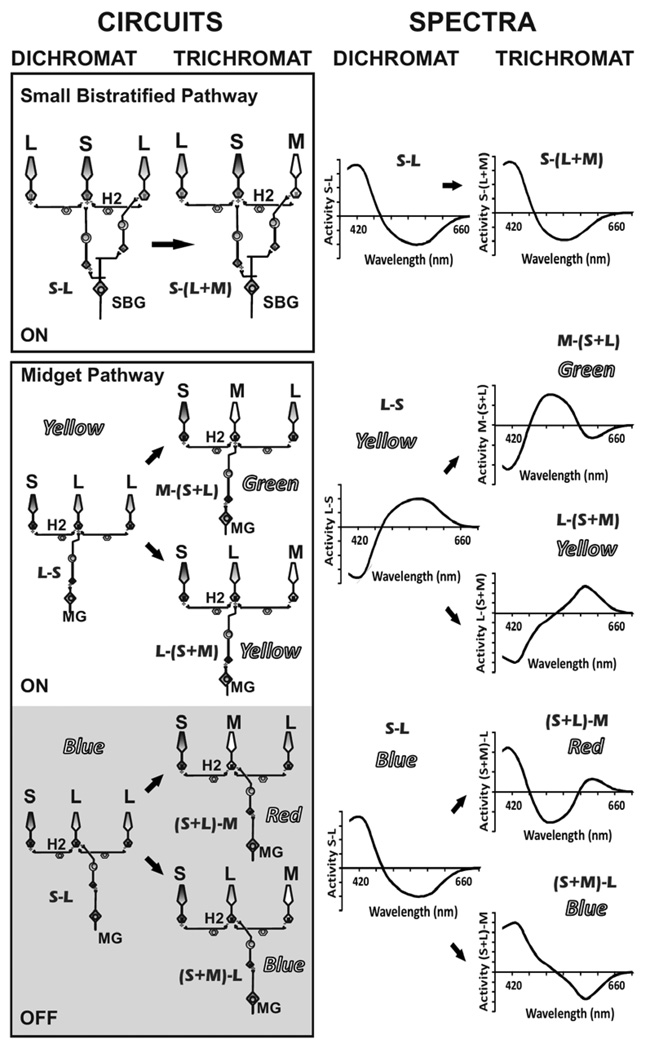FIGURE 1.
The addition of M cones to a dichromat only changes the “surrounds” of small bistratified ganglion (SBG) cell receptive fields, and all SBGs continue to have similar spectral response properties, making them an unlikely substrate for hue sensations of red, green, blue, and yellow. In contrast, both the “center” and “surround” of midget ganglion (MG) cell receptive fields become altered by the addition of M cones, splitting the pre-existing blue and yellow circuits each into two organizations with distinct spectral response properties and providing a biological basis for separate blue-yellow and red-green systems, with only a single change in the cone mosaic. H2 horizontal cells are labeled.

